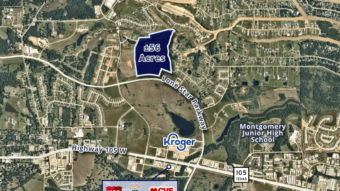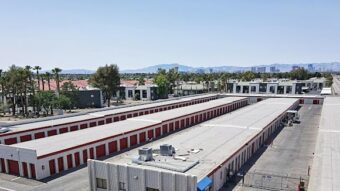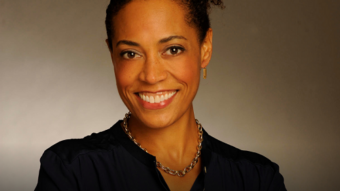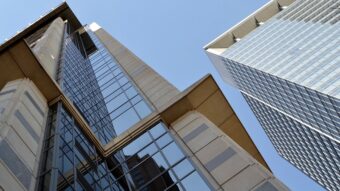To kick off the New Year, we thought it would be interesting to hear some “projections and prognostications” from several of the top developers who are most active in the marketplace. Here is what they all had to say about their thoughts for CRE in 2019.
What are your general expectations for user demand and any pricing adjustments in 2019?
Michael Murphy, chief development officer, Centerpoint Properties: The explosive growth of e-commerce will continue to drive demand for industrial space in 2019. There are several forces at play that could impact demand and pricing. Uncertainty remains from the impact of the tariffs on Chinese imports, prolonged U.S. government shutdown and future interest rate increases. Also, increasing supply chain costs, such as trucking costs from tight capacity, are increasing user decisions on multimodal locations and facility functionality. However, ongoing strength in consumer spending, manufacturing activity and other leading demand drivers of industrial real estate are expected to drive momentum forward.
Roy Splansky, principal, Venture One Real Estate: Strong user demand is evidenced by strong leasing activity for properties in our portfolio. We think that rents and cap rates will continue to be stable.
Adam Moore, senior regional director, First Industrial Real Estate Trust: We see continuing good broad-based demand driven by e-commerce activity, supply chain optimization and general growth in the economy. Rents in irreplaceable “infill” locations will continue to show growth, while asking prices for large distribution centers may remain flat in the near term given the current supply levels. That being said, demand tends to ebb and flow in certain pockets, which could cause temporary oversupply or tightening in certain submarkets. Long term, the demand drivers for our business are favorable, with our large population center and the trends for growth in consumption via e-commerce.
Jeff Lanaghan, market officer, IDI Logistics: Much like the Chicago market, user demand and rental rates will fluctuate according to the location. O’Hare will continue to prosper, while I-80 will be difficult until more super-bulk tenants identify a need to be in this market. In general, we expect Chicago to continue to perform strongly through 2019, but we will keep an alert eye open for signs of slowing later in the year. Construction pricing should stay fairly flat with only a percentage point or two of adjustment for labor costs in the coming year.
Brian Quigley, executive vice president, Conor Commerical Real Estate: With leasing demand, I see continued softness in the 400,000-square-foot and greater size category. Larger deals will migrate to secondary markets for lower rental rates and labor availability. There will be no growth in large scale lease rates in 2019. However, I see strong demand through 2019 and beyond in the less than 200,000-square-foot size range. Particular strength will be in infill and last mile locations where rent growth will be +5 percent.
John Pagliari, partner, Panattoni Development Company, Inc.: Pricing stays steady if the economy continues to grow two to three percent and the 10-year treasury rates stay in the high twos to low threes. Growth in the sub-two-percent range keeps interest rates down, but probably brings more uncertainty and caution about how long the cycle can last.
Don Schoenheider, senior vice president/Midwest, Hillwood (a Perot company): User demand will remain moderately strong, especially in the small- to medium-sized spaces…under 200,000 square feet. We may continue to see a drop-off in the larger, bulk-size ranges.
Will developers continue to plan and/or commence new construction on industrial facilities for both late 2019 and 2020 delivery?
Michael Murphy: With the leading indicators of industrial demand remaining extremely positive, along with the tailwind from e-commerce demand, we expect developers to continue to plan and commence new construction on industrial facilities, particularly in land- and entitlement-constrained markets. While we are operating in an extended economic and real estate cycle, the ongoing strength in the underlying fundamentals in the industrial market, along with the persistent demand by users seeking well-located, functional distribution space, positions the industry for further growth in 2019 and 2020.
Roy Splansky: This will be very submarket-driven based on the metrics of each market. Currently the strongest markets are any “infill” opportunities, i.e. O’Hare and the city of Chicago. We will begin new construction on a new 590,000-square-foot building at our Stateline 94 Corporate Park in Pleasant Prairie in southeast Wisconsin.
Adam Moore: Yes, we are seeing that construction starts will continue through this spring season, and this will put deliveries about steady through the first quarter of 2020. Construction has kept pace with absorption in Chicago during this cycle, so even if the economy hits a bump and demand slows down temporarily, we will not be left with a dangerous amount of unleased product. Developers and lenders have been fairly disciplined in turning down the spigot when supply/demand get temporarily imbalanced in certain submarkets.
Jeff Lanaghan: Developers develop and I don’t expect that to change in the near future. This is especially true considering the equity available for projects at virtually all locations and sizes with the amount of space under construction currently exceeding the deliveries in 2018. Readily developable parcels are harder to identify and execute upon however, so we expect a slight pause in development after the current wave of construction as sites are entitled. Whether those are developed upon immediately or held for the next cycle will be worth watching.
Brian Quigley: New construction will slow as much of 2018 activity occurred in I-80 and SE Wisconsin. Both of the submarkets will need heavy leasing volume before any more spec is built. As for infill locations, those are very slow and difficult to develop and typically require smaller scale buildings. Developers will remain active in last-mile and infill locations but land prices will escalate by 10 percent.
John Pagliari: Good question! Close-in, “infill” and Chicago are a “Yes,” and outlying areas are a “No.” Given these dynamics, the size of the buildings will be smaller and sites harder to find. Therefore, I would expect total deliverables to be lower in 2019 and 2020. In other non-Chicago markets, development is still cranking and on a par with recent years. In the Chicago area, it is hard to see how we continue with comparable square footage to recent years.
Don Schoenheider: New construction is driven by two things—user demand and the availability of capital. I don’t see either of those things dramatically changing in the next 18 months, so I would expect new development to continue at a steady rate. However, construction costs and labor availability and costs will be “wild cards” in the coming months.
What do you foresee with cap rates on industrial investment properties in 2019?
Michael Murphy: Significant capital continues to seek U.S. industrial real estate assets. Therefore, we expect cap rates to remain flat in 2019 for core industrial properties, provided interest rates remain constant.
Roy Splansky: We foresee that cap rates will remain the same as 2018.
Adam Moore: I do not see them getting any lower, but I do not see them starting to rise either. Demand from institutional and local investors for industrial properties remains strong, given the positive secular drivers of e-commerce. I think that they will remain at the current historically low levels through the next 12-plus months.
Jeff Lanaghan: It is hard to see cap rates compressing much more, especially in light of the Fed’s desire to raise interest rates. There remains, however, a strong appetite by investors for leased industrial product which should keep cap rates at or near their current aggressive levels.
Brian Quigley: Cap rates will widen as interest rates continue to rise but at modest levels. I predict cap rates will widen by five to 10 basis points for the best of the best industrial product in Chicago in 2019.
John Pagliari: Cap rates will be “flat” for Class A core properties, and rising slightly for non-core or “off the fairway” types of product. 10-year treasury rates above 2.5 percent are the point where record low cap rates begin to rise.
Don Schoenheider: We have continued to see cap rates decrease and the spreads in the primary markets come down compared to the secondary markets. We don’t see that trend dramatically changing.
A sincere “thank you” to Mike, Roy, Adam, Jeff, Brian, John and Don for taking the time to respond to the questions and provide their valuable insights into what’s in store for 2019! Wishing everyone a happy and prosperous New Year!



